Food Items To Include In Your Diet If You Have Varicose Veins
By Dr. Deepak Kumar Maharana +2 more

Get,

to manage your symptom
Get your,


4 Cr+ families
benefitted

OTP sent to 9988776655



You’ve successfully subscribed to receive
doctor-approved tips on
Whatsapp

Get ready to feel your best.

Hi There,
Download the PharmEasy App now!!


Register to Avail the Offer
Send OTPBy continuing, you agree with our Privacy Policy and Terms and Conditions

Hi There,
Sign up on PharmEasy now!!
Trusted by 4 crore+ families

OTP sent to 9988776655



You have unlocked 25% off on medicines




Code: NU25
By Dr. Deepak Kumar Maharana +2 more
Table of Contents
Varicose veins, also known as spider veins, varicose or varicosities, are twisted or enlarged veins, occurring mainly in the legs. Varicose veins occur when the veins become dilated, enlarged and overfilled with blood. They tend to be bluish purple or red in colour. Varicose veins is a common condition, especially among women. Around 25 to 30 per cent of adults suffer from varicose veins, especially in the lower legs1.
Regular veins have one-way valves that are designed to block blood from flowing backwards. When regular valves fail to perform as they are supposed to, blood begins to collect in the veins rather than continuing toward your heart. This causes the veins to enlarge. Varicose veins mostly occur in the lower leg area because these veins are the farthest from the heart with gravity making it more difficult for the blood to flow upwards2.

With blood accumulating in your veins, varicose may cause discomfort, inflammation and pain in the affected area. So, this condition requires proper diagnosis and management. However, in addition to that, your doctor may recommend certain changes in diet and food to help you temporarily deal with the discomfort.
Some of the food habit changes and additions you can inculcate in your diet are as follows:
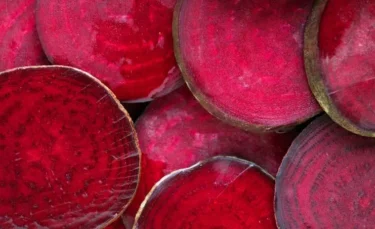
Beetroots contain a naturally occurring compound called betacyanin. This compound is what majorly contributes to the red colour of beets. Betacyanin is a phytochemical compound that lowers the levels of homocysteine (an amino acid that forms proteins) in the body3. Having high levels of homocysteine can damage blood vessels and lead to blood clots4. Thus, beets can help improve the condition of varicose veins.
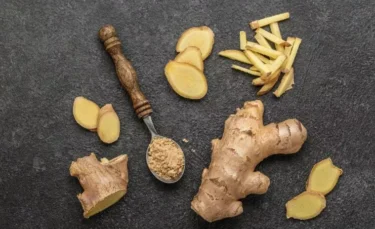
For many centuries, ginger has been used in Indian households as a spice as well as for its medicinal properties. It may help deal with the symptoms of varicose because it aids in increasing blood circulation and dissolving fibrin in the blood vessels5.
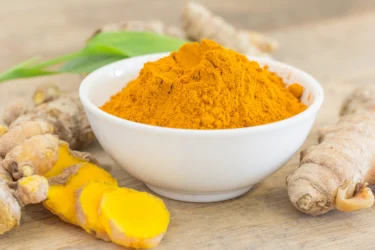
Since ancient times, turmeric has been used in Ayurvedic and traditional Chinese medicine to unclog blood vessels and promote effective blood circulation. Curcumin, an active ingredient in turmeric, increases the production of nitric oxide, which in turn facilitates better blood flow and circulation6
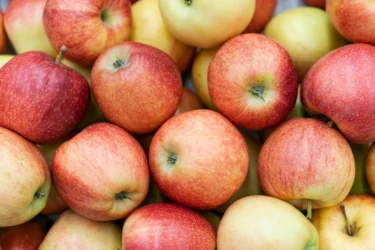
Fruits like apples, bananas and pears are high in fibre content. High fibre fruits lower the chances of inflammation and help with your overall health. Apples are high in rutin, a powerful antioxidant compound that helps to keep veins healthy.
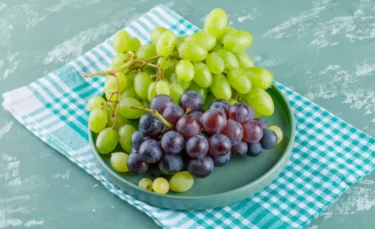
Red and purple grapes are loaded with flavonoids and vitamins along with oligomeric proanthocyanidins, also known as OPCs, which some researchers believe could lessen vein and leg swelling8.
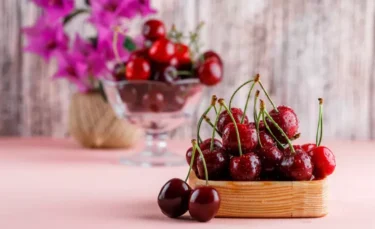
Like apples, cherries are loaded with rutin. Rutin is a flavonoid that helps lower cholesterol and blood pressure, as well as keep your veins healthy. In addition, this flavonoid is also anti-inflammatory, an excellent source of antioxidants and lowers the chance of blood clots9.
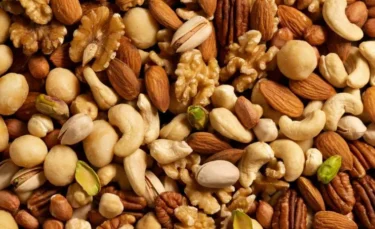
Nuts are rich in niacin and vitamin B3, which are essential nutrients for blood flow and help improve blood circulation10. Hemp, sunflower, flax and chia seeds are some foods rich in omega 3 fatty acids and fibre. They are also a good source of anti-inflammatory proteins that help in removing cholesterol and promoting blood flow quality11.
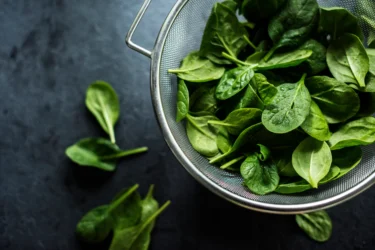
Leafy green vegetables such as kale and lettuce are excellent sources of magnesium, a mineral that plays a key role when it comes to managing blood circulation and blood flow12.
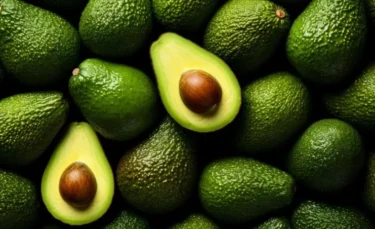
Some fats are good for your health and your veins, such as the fats found in avocado13. Avocados are also a great source of vitamins C and E, potassium and magnesium, overall helping in improved blood circulation.
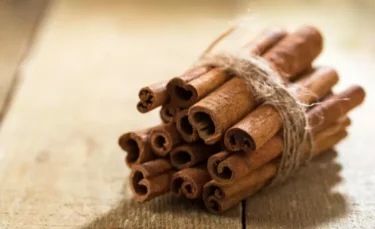
Cinnamon is a powerful spice known for regulating blood sugar levels and insulin resistance in type 2 diabetes. Other benefits of cinnamon include the ability to increase blood flow and promote circulation. Cinnamon helps blood vessels to dilate and widen, which makes it easier for blood to flow throughout your body5.
While in traditional medicine, these foods have been recommended to be beneficial for varicose veins, there is limited scientific evidence to support their use. Nonetheless, they are worth a try. However, please remember that these should only be an adjunct to medical therapy and never a replacement. Also, if you have any other medical issue like diabetes, it’s best to discuss with your doctor before including any new food item in your routine diet.
Flavonoid-rich diets such as green leafy vegetables and grapes may aid in the reduction of varicose veins in some people. Flavonoids may increase blood flow, stopping the blood from pooling in the veins and aiding in its movement. They may also relax blood vessels and lower the blood pressure in the arteries, which may lessen the occurrence of varicose veins16.
Dr. Siddharth Gupta, B.A.M.S, M.D (Ayu)
The following list of foods to be avoided with varicose veins14,15:
Researchers have found that grape seed extract from the plant Vitis vinifera may help relieve swelling in the lower legs and other symptoms of varicose veins. However, I suggest grape seed extract should be taken only after the recommendation from the doctor as it may interact with some drugs like blood thinners17.
Dr. Rajeev Singh, BAMS
When it comes to varicose veins, it is best to consume homemade food items with the above ingredients. You must follow a healthy diet that is per your doctor’s suggestions and body needs. Here are some interesting recipes you may try on:
Blood vessels transport blood throughout the body, their health is essential for proper blood flow and overall circulation. Although medical treatment remains the cornerstone of management of blood vessel conditions like varicose veins, it’s a good idea to include food items that are beneficial for proper blood flow and avoid those that may harm. When you eat healthy foods and indulge in exercises that improve circulation, you are allowing your cardiovascular health to remain healthy and lessen your risk of problems like varicose veins.
Varicose veins are caused by increased blood flow towards the veins of the legs. The blood moves towards the heart by one-way valves in the veins. When the valves become weakened or damaged, blood can collect in the veins, causing them to swell.
If varicose veins are left untreated, the veins continue to get more damaged and there is increased pain and swelling. It may further lead to soreness and ulceration of the skin.
Some healthcare professionals believe it could be because you experienced an injury to that side of the body which caused damage to the veins or the valves of the veins.
According to some specialists, in very extreme cases, varicose veins might affect the arterial system of the heart, but this generally does not happen.
Disclaimer: The information provided here is for educational/awareness purposes only and is not intended to be a substitute for medical treatment by a healthcare professional and should not be relied upon to diagnose or treat any medical condition. The reader should consult a registered medical practitioner to determine the appropriateness of the information and before consuming any medication. PharmEasy does not provide any guarantee or warranty (express or implied) regarding the accuracy, adequacy, completeness, legality, reliability or usefulness of the information; and disclaims any liability arising thereof.
Links and product recommendations in the information provided here are advertisements of third-party products available on the website. PharmEasy does not make any representation on the accuracy or suitability of such products/services. Advertisements do not influence the editorial decisions or content. The information in this blog is subject to change without notice. The authors and administrators reserve the right to modify, add, or remove content without notification. It is your responsibility to review this disclaimer regularly for any changes.
Comments

Leave your comment...
You may also like
Comments